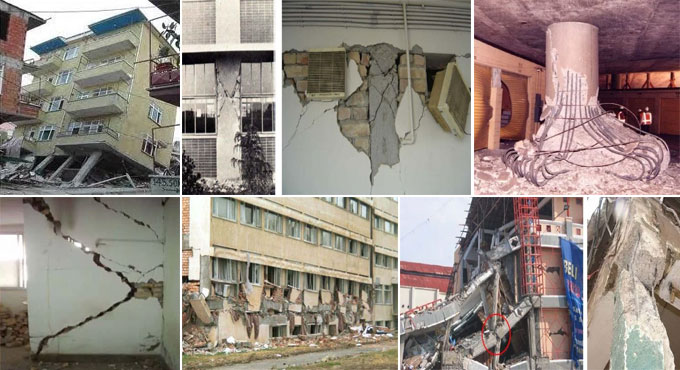
Some vital construction errors in earthquake-prone areas
In order to resist destructive forces caused by an earthquake, the buildings should be designed properly with perfect construction methods. To protect the building from the effect of earthquake as well as keep its longevity, one should take into account various common designs and construction errors in design & construction stage of structures.
As for instance, errors like soft storey, short columns, insufficient reinforcement detailing, non-structural damage, discontinuous force resisting system, poor quality concrete, insufficient detailing, and substandard materials increase the scope for the collapsing of a building due to earthquake.
1. Soft Storey: Development of soft storey in a structure is a general error that leads to severe damages to buildings during earthquake. Normally, building flaws are segregated into two major classes alias plan and vertical irregularities.
2. Short Columns: The building is mostly damaged because of the design and erection of short columns or development of short columns for various reasons in structures, especially in seismic prone area.
Short columns are constructed owing to non-load bearing brick walls. This wall checks lateral displacement of the frame and raises its hardness. Discrepancies in column lengths of the similar storey produce a delicate fracture in the columns. Also, the voids depart among the columns in infilled walls is another reason for short column development.
3. Insufficient Reinforcement Detailing: There are different types of reinforcement-detailing errors which contribute to the damages in earthquake-prone areas. As for example, beam-column joint having insufficient detailing, insufficient lap splice, and insufficient tie reinforcement (spacing and bars sizes). These problems can be avoided with the strict compliance to the code provisions and as well as perfect follow up of construction works.
4. Non-structural Damage: Generally, the longevity of a structure is not significantly impacted with non-structural damages. However, they can be created other types of problems like cracking and overturning of partition walls and parapets, falling of plaster and ceilings.
5. Discontinuous Force Resisting System: All vertical components in the lateral-force-resisting system should be uninterrupted to the foundation if not several catastrophic damages may occur. It is observed that the ground floor may fully collapse under the load of the floor just over it because of the disproportionate transmission of loads through the resisting system.
6. Strong Beam-weak Column: Strong beam-weak column is another general error that results in collapsing of structures in different earthquake-hit areas. In the case of weak column-strong beam, the column collapses prior to the beam and consecutive collapse can always happen.
7. Insufficient Detailing: Due to specific detailing errors, the damages may occur to a building throughout earthquakes, as for example, insufficient provisions for drainage, sudden alterations in section, insufficient expansion joints, and insufficient provision for deflection.
8. Substandard Quality Concrete: The use of substandard quality concrete is yet another error that can cause structural damages throughout earthquakes. Low-strength material having very less tensile and shear strength can also lead to damage.
9. Inferior Materials: Unreinforced masonry built with stones, adobe or hand-made clay bricks, is the type of housing construction system that has shown the largest damage. Substandard materials are weak by its nature and suffer damages considerably under earthquake attack. The application of some type of reinforcement is possibly liable for the single most effective alteration in minimizing earthquake damage of masonry constructions formed with specifically different materials.
10. Densely Populated Area: The construction should not be done in very densely inhabited areas as it can result in a massive loss of lives and property in the event of an earthquake.


